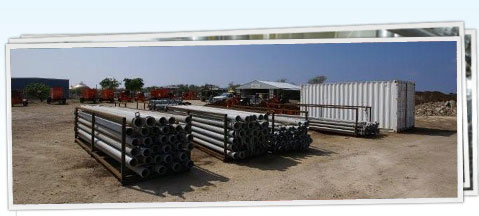

Friction Loss in Pipe
Losses Due to Friction
As water moves through the pumping system, pressure losses occur due to water contact with pipes, valves, and fittings. The four factors that determine friction losses in pipe are:
1. The velocity of the water: Water velocity is measured in feet per second. As velocity increases, pressure losses increase. Velocity is directly related to flow rate. An increase or decrease in flow rate will result in a corresponding increase or decrease in velocity.
2. The size (inside diameter) of the pipe: Smaller pipe causes a greater proportion of the water to be in contact with the pipe, which creates friction. Pipe size also affects velocity. Given a constant flow rate, decreasing pipe size increases the water's velocity, which increases friction.
3. The roughness of the inside of the pipe: Pipe inside wall roughness is rated by a "C" factor, which is provided by the manufacturer. The lower the C value, the rougher the inside and the more pressure loss due to friction.
4. The length of the pipe: The friction losses are cumulative as the water travels through the length of pipe. The greater the distance, the greater the friction losses will be.
Losses Due to Elevation Change
Water pressure can be expressed as either "psi" (pounds of pressure per square inch) or "feet of head." A column of water 1 foot high exerts 0.433 psi at the bottom and therefore 1 psi is equivalent to 2.31 feet of head. This means that for every foot of elevation change from the pump to the discharge point, the corresponding change in pressure will be 0.433 psi.
Fresh Water
1 foot of head = 0.433 psi
1.0 psi = 2.31 feet of head
Salt Water
1 foot of head = 0.444 psi
1.0 psi = 2.25 feet of head
Disclaimer
Pacific Pump and Power Inc. accepts no responsibility for any losses or damage or other matters arising from the use of this information. The use of information and advice contained is used solely at the risk of the user.



